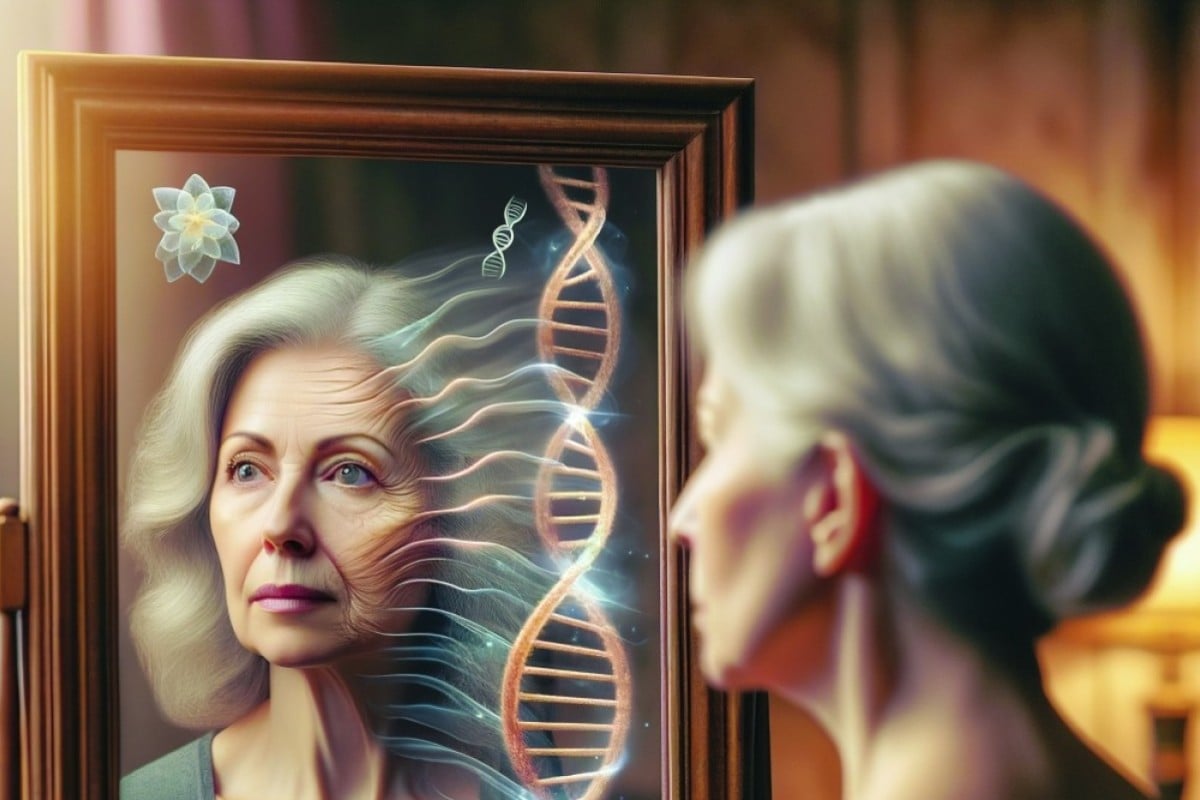
Study Buddy (Challenger): AI tool predicts biological age using selfies
This page is for students who want to take their reading comprehension to the next level with difficult vocabulary and questions to test their inference skills
 AI tool FaceAge uses selfies to predict a person’s biological age, aiding medical decisions and offering insights beyond chronological age. Photo: Shutterstock
AI tool FaceAge uses selfies to predict a person’s biological age, aiding medical decisions and offering insights beyond chronological age. Photo: Shutterstock Content provided by British Council
Read the following text, and answer questions 1-9 below:
[1] Doctors often begin exams with an “eyeball test”. Through this test, they can quickly judge if a patient looks older or younger than their actual age. This initial impression can impact important medical decisions. A new development may enhance this process with the aid of artificial intelligence (AI). FaceAge is a deep learning algorithm. It was recently presented in The Lancet Digital Health, and it analyses a simple headshot. Then, it provides a number that represents a person’s biological age more accurately than their chronological age, as shown on medical records.
[2] Trained on tens of thousands of photographs, it pegged cancer patients on average as biologically five years older than healthy peers. The study’s authors say it could help doctors decide who can safely tolerate punishing treatments and who might fare better with a gentler approach. “We hypothesise that FaceAge could be used as a biomarker in cancer care to quantify a patient’s biological age and help a doctor make these tough decisions,” said co-senior author Raymond Mak, an oncologist at Mass Brigham Health, a Harvard-affiliated health system in the US city of Boston.
[3] Imagine two patients: a lively 75-year-old whose biological age is 65, and a fragile 60-year-old who is biologically 70. For the first patient, aggressive radiation treatment might be suitable, but it could pose significant risks for the second patient. This reasoning can also assist in making choices about heart surgery, hip replacements or end-of-life care. Research shows that people age at different paces based on their genetics, stress levels, physical activity and habits such as smoking or drinking. While expensive genetic tests can show how DNA ages over time, FaceAge offers a way to gain similar insights just by using a selfie.
[4] The model was developed using photos of 58,851 healthy adults over 60 from public data. It was tested on 6,196 cancer patients in the US and the Netherlands, using pictures taken just before they started radiotherapy. On average, cancer patients appeared almost five years older than their actual age.
[5] A higher FaceAge score in these patients was associated with lower survival rates, even when taking into account their actual age, sex, and cancer type. The risks were especially higher for those whose biological age was over 85 years. Intriguingly, FaceAge appears to weigh the signs of ageing differently than humans do. It focuses more on small changes in facial muscle tone rather than just grey hair or balding. It also helps doctors be more accurate.
[6] There are key ethical concerns to consider. Although AI that can determine biological age from a selfie could help doctors, it might also be misused by life insurers or employers to assess risk. “It is for sure something that needs attention to assure that these technologies are used only for the benefit of the patient,” said Hugo Aerts, the study’s co-lead.
[7] The researchers are planning to open a public-facing FaceAge portal where people can upload their own pictures to enrol in a research study to validate the algorithm further. Commercial versions aimed at clinicians may follow.
Source: Agence France-Presse, May 8
Questions
1. What is one potential benefit of using FaceAge over the traditional “eyeball test”, according to paragraph 1?
2. Based on your understanding of paragraph 1, which of the following best describes the technology behind FaceAge?
A. It relies on manual calculations and doctor input.
B. It uses a complex form of artificial intelligence.
C. It is a simple mathematical formula based on facial features.
D. It leverages satellite imagery to track one’s environmental factors.
3. What do the “tough decisions” in paragraph 2 refer to?
4. What does the comparison of the two patients in paragraph 3 suggest about the correlation between chronological age and biological age?
5. According to paragraph 3, which factor influences the rate at which humans age?
A. one’s level of stress
B. one’s lifestyle habits
C. one’s inherited traits
D. all of the above
6. What does a lower FaceAge score likely indicate about a cancer patient’s health outcome, according to paragraph 5?
7. Based on paragraph 5, FaceAge assesses ageing differently to humans by …
A. placing greater emphasis on easily observable physical traits.
B. analysing patient features in relation to how old they feel.
C. considering the patient’s socioeconomic background and family environment.
D. none of the above
8. Paragraph 6 discusses …
A. concerns surrounding the potential misuse of the technology.
B. the technical limitations of using selfies for biological age assessment.
C. future plans for expanding the research study to include younger participants.
D. the positive feedback received from tech companies regarding the FaceAge algorithm.
9. Find a word in paragraph 7 that means “to confirm accuracy”.
Answers
1. It may offer a more accurate reflection of a person’s biological age.
2. C
3. intensity of treatment for cancer patients (accept all similar answers)
4. Chronological age and biological age are not always directly correlated and that individuals of the same chronological age can have significantly different biological ages. (accept all similar answers) 5. D
6. a better survival outcome for them
7. D
8. A
9. validate